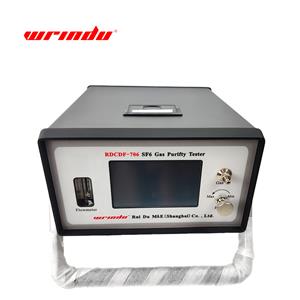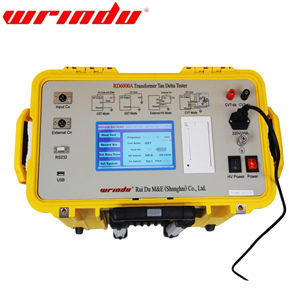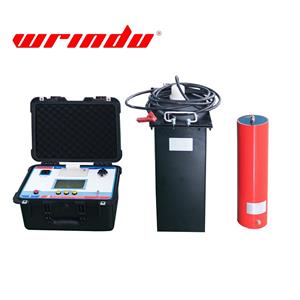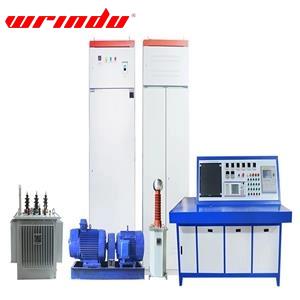Which is better: dry-type test transformer, oil-immersed test transformer, or gas-insulated test transformer?
When we mention the power frequency AC withstand voltage device, we must refer to this core formula: Output current (mA) = Capacity (KVA) ÷ Output voltage (KV) × 1000.
The power frequency AC withstand voltage test device is a key insulation performance testing tool in the field of power systems and electrical equipment testing. It is mainly used to simulate the operating condition of electrical equipment under rated working voltage or short-term overvoltage. By applying high-voltage AC with a power frequency (usually 50Hz in China), it checks if the insulation layer of cables, transformers, switches, motors, etc., can withstand the voltage without breaking down. This device is crucial for detecting insulation defects and ensuring the safe operation of power systems.
Core Function of AC Withstand Voltage Device
Its main function is to generate high-voltage AC with the same frequency as the equipment's actual operating frequency using a high-voltage generation module. This high-voltage is applied to the insulation part of the tested equipment to simulate long-term operation or short-term overvoltage scenarios. It helps test the insulation's ability to withstand stress and identify issues such as manufacturing defects, aging, or moisture damage.
Working Principles of AC Withstand Voltage Device
The working principle starts with connecting to a 220V/380V low-voltage AC power supply. Then, a power frequency step-up transformer is used to convert it to high voltage. The high-voltage AC is applied to the equipment, while a high-voltage divider (which reduces the voltage proportionally) measures the actual output voltage to ensure it matches the set value. If there is no breakdown or flashover during the test, the insulation is considered qualified.
Differences between high-voltage generation modules
The dry-type test transformer, oil-immersed test transformer, and gas-insulated test transformer are all core voltage-boosting components of power frequency withstand voltage test devices. The key differences lie in the insulating medium, structural performance, and applicable scenarios.
| Comparison Dimensions | Dry-Type Test Transformer | Oil-Immersed Test Transformer | Gas-Insulated Test Transformer (e.g., SF₆ Gas Insulated) |
| Core Insulating Medium | Epoxy resin, fiberglass, and other solid insulating materials | Mineral oil (or synthetic insulating oil) | Sulfur hexafluoride (SF₆) gas (excellent insulation and arc-extinguishing properties) |
| Structure and Maintenance | Compact structure, no oil chamber design, no leakage risk | Sealed oil chamber (contains insulating oil), oil quality degradation and leakage possible over time | Sealed gas chamber (requires maintaining gas pressure), relatively complex structure |
| Maintenance Requirements | Maintenance-free (no need for oil replacement or oil quality checks), only requires surface cleaning | Regular maintenance needed: oil quality checks (breakdown voltage, dielectric loss), replace aging insulating oil, check sealing status | Regular monitoring of gas chamber pressure (to prevent gas leakage), refilling SF₆ gas, high sealing performance required |
| Environmental Adaptability | Suitable for dry, clean environments; narrow temperature and humidity range (moisture may affect insulation) | Suitable for a wide range of temperatures and humidity, insulating oil also provides heat dissipation, good high-temperature stability | Suitable for harsh environments (high/low temperatures, high humidity, dust), SF₆ gas insulation is minimally affected by environmental conditions |
| Heat Dissipation Performance | Relies on natural air cooling, moderate cooling efficiency, larger models may need additional fans | Insulating oil provides convective cooling, high cooling efficiency, suitable for long-term high-load tests | Gas convection + metal shell cooling, good cooling efficiency, suitable for medium to high-load tests |
| Safety and Environmental Impact | No oil or harmful gases, environment friendly; no fire risk (solid insulation is non-flammable) | Insulating oil is flammable, posing fire risks; oil leakage may cause environmental pollution | SF₆ gas is a potent greenhouse gas; leakage worsens global warming; the gas is non-toxic, but high concentrations can cause suffocation |
| Cost and Lifespan | Medium initial cost, long lifespan (solid insulation ages slowly) | Low initial cost (mature technology), lifespan heavily influenced by oil quality (poor maintenance shortens lifespan) | High initial cost (complex sealing and pressure monitoring), long lifespan (gas insulation is stable, no aging issues) |
| Suitable Scenarios | Suitable for clean, fixed environments like laboratories or workshops | Suitable for outdoor temporary testing, industrial sites, or cost-sensitive scenarios | Suitable for high-voltage and extra-high-voltage tests, or long-term operation in harsh outdoor environments (e.g., substations, high-altitude areas) |
Frequently ask questions about high-voltage generation modules are as follows:
Q: Which type of test transformer is easier to maintain?
A: Dry-type test transformers are maintenance-free, requiring only surface cleaning. Oil-immersed transformers need regular oil checks and replacements, while gas-insulated transformers require monitoring of gas pressure and refilling of SF₆ gas.
Q: Is there a difference in test results between oil and gas under the same testing accuracy?
A: Yes, such differences can occur because oil is heavier and has better heat dissipation, while gas is lighter and has better insulation properties. Additionally, the measurement results are also influenced by the testing environment and the tested equipment.
Q: Are there any safety concerns with oil-immersed or gas-insulated test transformers?
A: Yes, dry-type transformers are the safest, as they have no oil or harmful gases. Oil-immersed transformers are flammable and could cause fire risks. Gas-insulated transformers use SF₆ gas, which is a strong greenhouse gas and poses a risk if it leaks.
Q: What type of test transformer is suitable for high-voltage tests?
A: Gas-insulated test transformers are ideal for high and extra-high voltage tests, especially in outdoor settings like substations or areas with extreme environmental conditions. Dry-type and oil-immersed transformers can also be used but are typically for lower voltage ranges.
IF you are interested in AC withstand voltage device, click here to find more information.
Related articles
The difference between high voltage AC withstand voltage test and DC withstand voltage test.
Purpose and test method of AC withstand voltage test for transformer.
The role of DC high voltage generator in power cable testing.




